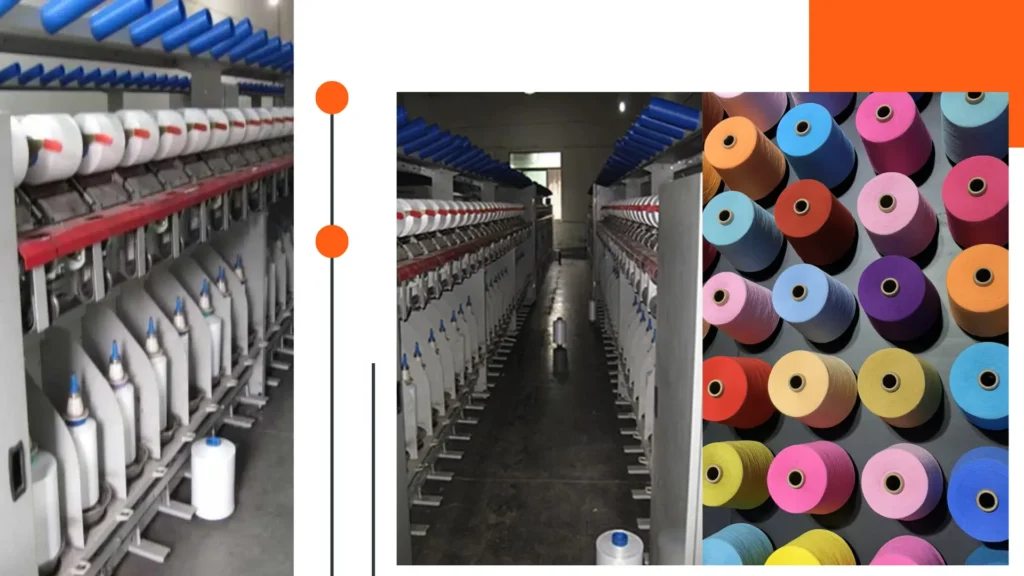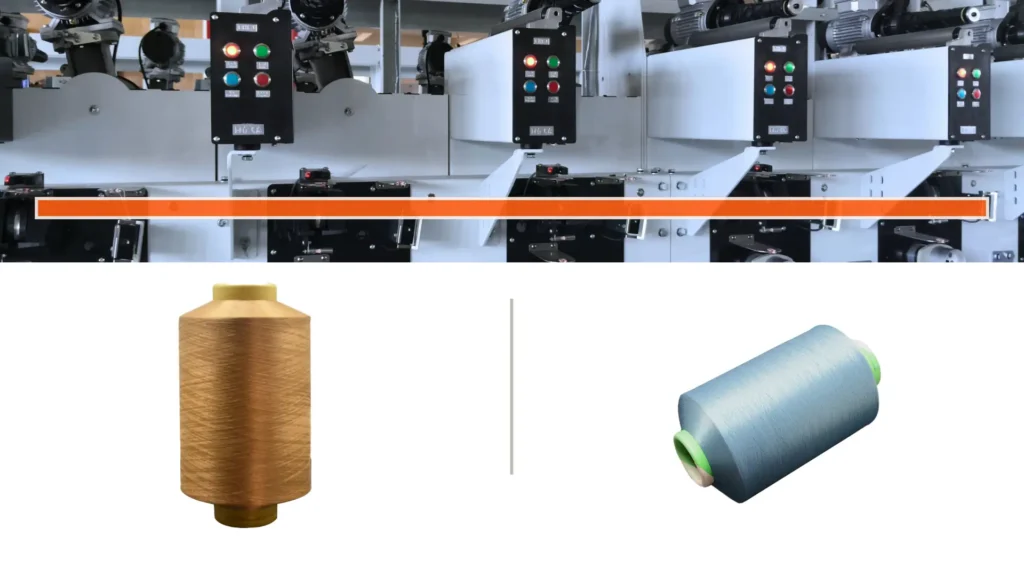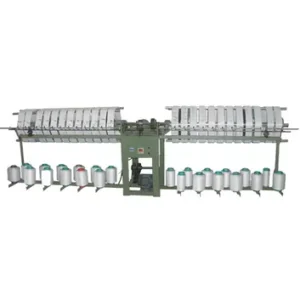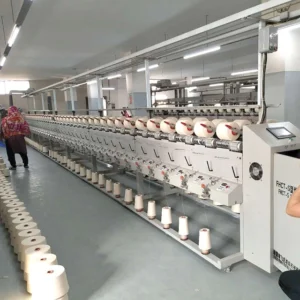The textile industry generates enormous amounts of waste at every production stage – from excess fabric cuttings to unsold inventory.
Artificial Intelligence is emerging as a powerful tool to minimize this waste while improving efficiency.
This guide explores how AI technologies are helping manufacturers reduce material waste, optimize resources, and create more sustainable production processes – all while maintaining quality and profitability.
How Can AI Optimize Fabric Cutting to Reduce Waste?
Smart Pattern Nesting Algorithms
Smart pattern nesting algorithms leverage advanced AI systems to analyze fabric rolls and optimize the arrangement of patterns for cutting.
By evaluating the dimensions and characteristics of the fabric, these algorithms can create layouts that maximize material efficiency, reducing waste during the cutting process by an impressive 15-20%.
This optimization is particularly beneficial in industries where fabric costs are significant, as it ensures that every inch of material is utilized effectively.
Defect Detection and Avoidance
Defect detection and avoidance technologies utilize computer vision to identify flaws in fabrics before they enter the cutting phase, significantly enhancing quality control.
By scanning fabric surfaces in real time, these systems can detect imperfections such as stains, holes, or inconsistencies, allowing manufacturers to take corrective action swiftly.
When defects are identified, the cutting patterns can be automatically adjusted to avoid damaged areas, ensuring that only high-quality sections of fabric are used in production.
Predictive Fabric Utilization
Predictive fabric utilization employs machine learning algorithms to forecast the optimal quantities of fabric needed for upcoming production runs, helping manufacturers avoid over-ordering and minimizing deadstock.
By analyzing historical data, order patterns, and market trends, these algorithms can provide accurate estimates of fabric requirements based on specific project demands.
This predictive capability allows businesses to make informed purchasing decisions, reducing the risk of excess inventory that may go unsold or become obsolete.
And More:
- The Role of Robotics in Achieving Green Textile Production
- The Impact of Automation on Reducing Carbon Emissions in Textile Factories
What Role Does AI Play in Inventory Management?
Demand Forecasting Accuracy
AI-driven demand forecasting harnesses advanced analytics to meticulously analyze sales data, market trends, and external factors, enabling manufacturers to predict required production volumes with over 90% accuracy.
By examining historical sales patterns and considering variables such as seasonal fluctuations, consumer behavior, and economic indicators, these AI systems provide actionable insights that inform production planning.
This high level of accuracy helps businesses align their manufacturing capabilities with actual market demand, reducing the risk of overproduction or stockouts.
Dynamic Inventory Optimization
Dynamic inventory optimization employs smart systems that automatically adjust production schedules based on real-time inventory levels and demand signals.
By continuously monitoring stock levels, sales rates, and incoming orders, these systems can identify when to ramp up or scale back production to ensure that inventory aligns with current market needs.
This proactive approach minimizes the risk of excess inventory or shortages, allowing manufacturers to operate more efficiently and respond quickly to changes in demand.
Waste Tracking Analytics
Waste tracking analytics utilizes AI technology to pinpoint the specific areas and reasons for material waste throughout the supply chain.
By collecting and analyzing data at various stages—from raw material procurement to production and distribution—these systems can identify inefficiencies and waste hotspots.
This insight allows manufacturers to implement targeted strategies for waste reduction, such as optimizing cutting patterns, improving manufacturing processes, or enhancing logistics.
How Does AI Improve Quality Control?
Automated Defect Detection
Automated defect detection systems utilize advanced computer vision technology to identify microscopic flaws in fabrics and materials that human inspectors might overlook.
By employing high-resolution imaging and sophisticated algorithms, these systems can analyze fabric surfaces in real time, spotting imperfections such as tiny tears, color inconsistencies, or weave defects.
This level of precision significantly reduces seconds-quality waste—materials that do not meet quality standards—by up to 40%, ensuring that only flawless products proceed to the next stages of production.
Predictive Maintenance
Predictive maintenance harnesses the power of AI to forecast potential equipment failures before they disrupt production.
By analyzing data from sensors embedded in machinery, AI algorithms can identify patterns and anomalies that indicate impending issues, allowing maintenance teams to address problems proactively.
This approach helps prevent defective production runs caused by equipment malfunctions, which can lead to costly downtime and wasted materials.
Real-Time Process Adjustment
Real-time process adjustment involves the use of sensors and smart systems to monitor quality deviations during production, enabling automatic corrections to machine settings on the fly.
These sensors continuously collect data on various parameters, such as tension, temperature, and material properties, allowing for immediate detection of any discrepancies from set quality standards.
When deviations are identified, the system can automatically adjust machine settings—such as speed or pressure—to correct the issue, ensuring that production remains within desired quality thresholds.
And More:
Selecting the Appropriate Automation Technology for Sustainable Textile Production
Can AI Help Recycle and Repurpose Waste?
Waste Stream Analysis
Waste stream analysis powered by AI involves the classification and sorting of various types of textile waste to maximize their recycling potential.
By utilizing advanced algorithms and machine learning techniques, these systems can distinguish between different fabric types, blends, and contaminants, enabling more effective sorting processes.
This precise classification is crucial for recycling facilities, as it ensures that materials are processed appropriately according to their specific recycling requirements.
Circular Design Assistance
Circular design assistance leverages generative AI to propose innovative product designs that effectively incorporate waste materials.
By analyzing existing waste streams and understanding material properties, generative AI can suggest new products that utilize these materials creatively, transforming what would be considered waste into valuable resources.
This design approach encourages manufacturers to think beyond traditional linear production models, fostering a circular economy where materials are reused and repurposed.
Recycling Process Optimization
Recycling process optimization uses machine learning to enhance the efficiency of textile-to-textile recycling operations.
By analyzing data from various stages of the recycling process, machine learning algorithms can identify bottlenecks, inefficiencies, and areas for improvement.
This insight allows recycling facilities to streamline operations, reduce energy consumption, and improve output quality.
How Does AI Optimize Production Planning?
Smart Batch Scheduling
Smart batch scheduling utilizes AI to create optimized production sequences that significantly minimize changeover waste and energy consumption.
By analyzing production data, equipment capabilities, and order priorities, AI algorithms can determine the most efficient order of operations, reducing the time and resources spent on transitioning between different production runs.
This optimization not only enhances productivity but also lowers operational costs by minimizing idle time and energy usage during changeovers.
Color Management Systems
Color management systems powered by algorithms are designed to optimize dye lots, significantly reducing waste associated with water, chemicals, and colorants in the dyeing process.
By employing data-driven insights, these systems can predict the exact dye requirements based on fabric type and desired color outcomes, minimizing excess usage of water and chemical agents.
This precise approach not only ensures consistent color quality across batches but also enhances sustainability by reducing the environmental footprint of dyeing operations.
Resource Allocation
AI-driven resource allocation balances labor, materials, and machines to prevent overproduction waste and optimize manufacturing efficiency.
By analyzing real-time data on production demands, workforce availability, and machine capacities, AI systems can dynamically adjust resource distribution to match current needs.
This proactive management helps avoid scenarios where excess materials are produced, which can lead to waste and increased operational costs.
What Are the Implementation Challenges?
Data Collection Requirements
AI systems rely heavily on comprehensive historical data to generate accurate recommendations and insights that drive decision-making processes.
This data includes past production metrics, sales trends, inventory levels, and operational performance indicators.
The richness and quality of this data directly influence the accuracy of the AI’s predictive analytics and recommendations.
Workforce Training Needs
As organizations increasingly adopt AI technologies, it is essential to invest in workforce training programs that enable staff to interpret and act on AI-generated insights effectively.
Employees need to understand how to utilize AI tools and interpret the data presented to them, ensuring they can make informed decisions based on these insights.
Training should encompass not only the technical aspects of using AI systems but also the analytical skills required to analyze trends, identify anomalies, and apply recommendations in real-world scenarios.
Integration With Legacy Systems
Integrating AI solutions with existing legacy systems can pose significant challenges, often requiring technical adaptations and careful planning.
Many organizations operate with established machinery and software that may not be inherently compatible with modern AI technologies.
To facilitate seamless integration, businesses must assess their current infrastructure and determine the necessary modifications or upgrades needed to support AI implementation.
How Quickly Can AI Solutions Deliver Results?
Immediate Waste Reductions
Many AI tools are designed to deliver immediate waste reductions, often showing significant impacts within the first production cycles following implementation.
These systems analyze real-time data to identify inefficiencies and optimize processes, allowing manufacturers to quickly reduce material waste, energy consumption, and operational costs.
As businesses witness these immediate improvements, they are more likely to adopt further innovations and fully embrace the transformative potential of AI.
Continuous Improvement
Machine learning systems are designed to continuously learn and adapt over time, which allows them to deliver growing benefits as they process more data and refine their algorithms.
As these systems gather insights from ongoing operations, they become increasingly adept at identifying patterns, predicting outcomes, and recommending optimizations.
This continuous improvement cycle means that the longer an AI system is in use, the more valuable it becomes, as it can uncover deeper insights and enhance decision-making processes.
Scalable Impact
The success of pilot projects using AI technologies can lead to scalable impact across entire production networks, allowing organizations to replicate successful strategies on a larger scale.
When initial implementations demonstrate measurable improvements in efficiency, waste reduction, and overall productivity, companies can confidently expand these solutions to other facilities or production lines.
This scalability is particularly beneficial in multi-location manufacturing environments, where consistent application of proven practices can lead to significant cumulative benefits.
Conclusion
AI is transforming textile manufacturing from one of the world’s most wasteful industries to a model of efficiency and sustainability.
By implementing AI solutions at key waste points – from design to production to inventory management – manufacturers can significantly reduce their environmental impact while improving their bottom line.
The technology exists today; the opportunity is in strategic implementation tailored to each manufacturer’s specific needs and capabilities.
Ready to explore how AI can reduce waste in your operations? Our textile AI specialists can assess your facility and recommend customized solutions – contact us today to begin your waste reduction journey.












